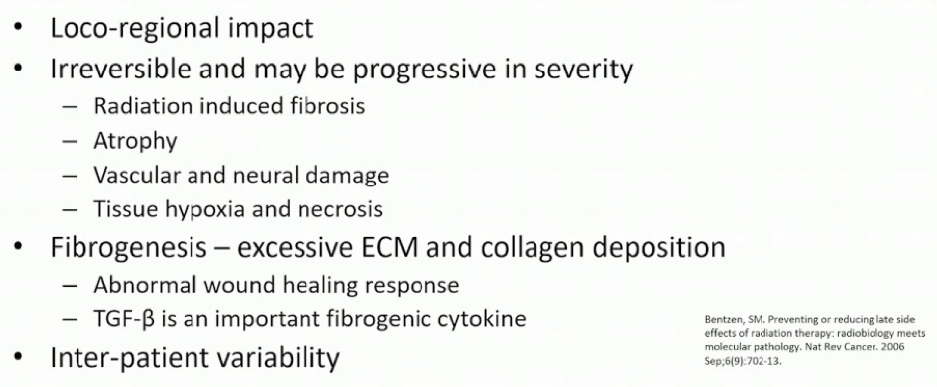(UroToday.com) In a plenary session at the American Urologic Association Virtual Annual Meeting, Kenneth Angermeier, MD, FACS moderated a session titled: “Is Radiotherapy the Devil’s Work?” Along with panelists Tamsin Greenwell, MD, Sean Elliott, MD, MS, and Francisco Martins, MD, Dr. Angermeier walked through a discussion of this premise.
To begin, Dr. Angermeier highlighted that radiotherapy is an integral part of treatment for many pelvic cancers including prostate cancer, anorectal cancers, and many gynecologic cancers. Together, these are very common conditions with an estimated 250,000 new prostate, cervical and rectal cancer cases in 2020. Highlighting data on prostate cancer, he highlighted that radiotherapy is commonly utilized with predominately external beam approaches used in recent years, with a decline in the utilization of brachytherapy.
As cancer treatment has improved survival rates, survivorship is an increasingly large issue with increasing opportunities for late radiotherapy toxicity. The toxicity of radiotherapy exhibits significant variability between patients. However, when present, it is both irreversible and may be progressive in nature.

While relatively uncommon, serious complications are often in the purview of urologists and may be potentially devastating, including severe radiation cystitis, rectourethral fistula, prostatopubic or vesicopubic fistula, posterior urethral stenosis, rectovaginal or vesicovaginal fistula, and ureteral obstruction.
Dr. Greenwell then discussed radiation cystitis and overall effect on bladder function. Radiation cystitis, as most urologists know, is relatively common representing 1.4% of elective and 7.2% of emergent urologic admissions. Surgical interventions are required in the majority of patients, with urinary diversion an uncommon but potentially devastating outcome.

Severe hematuria/hemorrhagic cystitis is common among patients treated with pelvic radiotherapy: grade 3 in 5-13% of patients and grade 4 in almost 9%.
Beyond hematuria, radiotherapy may have other long-term effects on the bladder. Based on urodynamic testing, radiotherapy is associated with significantly reduced bladder compliance, reduced maximal cystometic capacity, and increased stress urinary incontinence.

Treatment of these patients can be difficult. However, Dr. Greenwell highlighted the role of botulinum toxin A in ameliorating these urodynamic changes.
Radiotherapy may also affect the upper tract with significant obstruction requiring major reconstructive surgery. While feasible, these surgeries are associated with a substantial need for revision surgery and complication rates.

Dr. Martins then discussed the effect of radiotherapy for gynecologic cancer with a focus on vesicovaginal and rectovaginal fistulae. He began with a case presentation highlighting the potential multi-organ effects of pelvic radiotherapy. In the presented cases, as patient treated with radiotherapy for cervical cancer required gynecologic extirpation for cancer control including hysterectomy, oophorectomy, and pelvic lymphadenectomy. Subsequent development of a vesicovaginal and rectovaginal fistulae required diverting colostomy and bilateral nephrostomy for urinary diversion. A difficult surgical reconstruction was undertaken requiring fistulectomy, partial cystectomy, partial vaginectomy, segmental sigmoidectomy with primary anastomosis, neovaginoplasty, and augmentation cystoplasty. Such a large undertaking is associated with significant recovery period necessitating 7 months prior to colostomy closure.
In the setting of gynecologic cancers, he stressed the tension between “delight and disaster” with common urinary adverse events (67%) and bowel adverse events (80%). Approximately a quarter of all gynecologic cancer patients have high-grade complications within 90 days of treatment. The effects of so-called pelvic radiation disease have a significant effect on quality of life.

Severe complications (grade 3 or greater) occur in more than a quarter of patients receiving radiotherapy for gynecologic cancers. Urinary diversion is indicated for radiation cystitis, and also for irreparable vesicovaginal fistula.
Finally, Dr. Elliott discussed anterior prostatopubic or vesicopubic fistulae. These are rare clinical entities and are most often associated with radiotherapy with or without TURP (90%). The majority of these patients are treated with cystectomy while a small minority are candidates for reconstruction.
Identification of these patients is often difficult due to a variety of symptoms for pubic osteomyelitis.

Dr. Elliott highlighted that pelvic MRI is critical to the diagnosis. T1 sequences are helpful to identify osteomyelitis while T2 sequences are important in visualizing the urinary findings and the fistula.
For patients with a cavitation defect, significant stricture, or poor bladder function, cystoprostatectomy with urinary diversion is indicated. Dr. Elliott further advocated for 6-12 weeks of intravenous antimicrobial therapy guided based on intra-operative bone culture.

Concordance between bone and urinary cultures is reasonable, but not perfect (63%).
In ideal candidates, reconstructive approaches may be considered such as primary repair or buccal grafts or rectus abdominus flaps.
Presented by: Kenneth Angermeier, MD, FACS, Cleveland Clinic, Cleveland, OH, USA; Tamsin Greenwell, MD, University College London Hospital, London, England; Sean Elliott, MD, MS, University of Minnesota, Minneapolis, MN; Francisco Martins, MD, University of Lisbon School of Medicine, Santa Maria University Hospital, Lisbon, Portugal
Written by: Christopher J.D. Wallis, Urologic Oncology Fellow, Vanderbilt University Medical Center, Twitter: @WallisCJD, at the 2020 American Urological Association (AUA) Annual Meeting, Virtual Experience #AUA20, June 27- 28, 2020.


